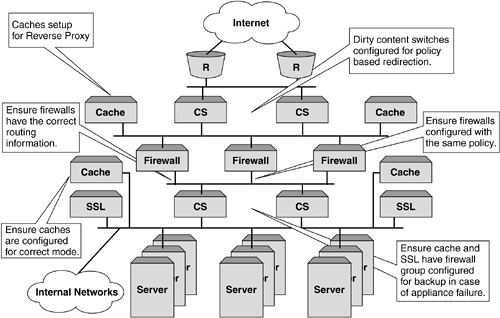Summary
| Firewall load balancing is a very exciting part of content networking and one that allows network administrators to scale the firewall layer of the network. As technology evolves, firewalls are becoming an integral part of almost all organizations, as security is high on everyone's agenda. The traditional bottlenecks associated with firewalls are slowly being removed either by using firewall load balancing or as manufacturers produce ASIC-based high-speed firewalls. Regardless of how these firewalls evolve , we will most certainly still have a requirement to create a truly resilient, high-speed design that will require load balancing of some sort , be it external to the device or integrated within the device itself. Understanding how to configure this as well as the traffic flow will certainly assist in designing and troubleshooting these networks in the future. Case Study: Firewall and VPN Load BalancingWith network access increasing and the need to provide a truly global operation, Foocorp, Inc. has decided to increase security as well as access speeds by deploying firewall load balancing. This will allow Foocorp the following advantages:
Deploying Firewall and VPN Load BalancingFirewall and VPN load balancing can be a complex configuration and often relies on planning of the deployment prior to installation. While complex, it is a logical operation and it is important that these following steps are covered:
We can see how this has been achieved by Foocorp in Figure 9-19. Figure 9-19. Foocorp, Inc. using WCR. By deploying firewall load balancing, Foocorp has been able to achieve the following:
Firewall load balancing is a very cost-effective solution for maximizing all available firewalls regardless of manufacturer. Foocorp has now deployed a comprehensive security network that allows for a very scalable, flexible, and resilient network. Any future additions or applications can be seamlessly accommodated. |
EAN: 2147483647
Pages: 85
